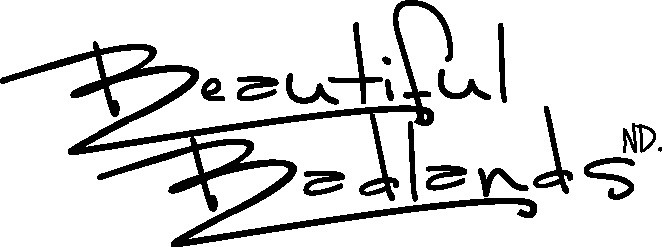SITTING BULL IN VERSE
by Douglas W. Ellison


The William F. Cody Archive
Title: Sitting Bull and family
Creator: J. Pitcher Spooner
Portrait of Sitting Bull and his family wearing traditional regalia. Sitting Bull’s mother, Her Holy Door sits on his right, wives Four Robes and Seen-By-The-Nation stand behind him, and his oldest daughter, Many Horses and her son sit on his left. Sitting Bull holds a pipe and pipe bag on his lap.
Source: McCracken Research Library, Buffalo Bill Center of the West
Background
The drama of Custer’s defeat at the Little Bighorn has always inspired poetic expression. The poem “Sitting Bull” by Alexander Preston Longley (1824-1912) in September 1876 is among the earliest examples. Longley was a native of Tennessee who moved to Texas as a young man. He interrupted his teaching career to serve in Captain John S. “Rip” Ford’s company of Texas Rangers from 1849 to 1851.
In his 1904 pension application, Longley declared that he had engaged in 29 battles with Comanche Indians, in which 60 Rangers were killed while he received a slight arrow wound in his right arm. In 1852 he moved to California to search for gold, and for nearly six decades he also provided more than 300 poetic nuggets to area newspapers.
Writing as Pres Longley, he became widely known as “The Bard of Butte” and “The Poet of Helltown.” His poem “Sitting Bull” appeared in the Butte Record of Oroville, California on September 25, 1876. For its time and place, it is notable for its sympathetic tone for the Indian, especially coming from an old Indian fighter.
SITTING BULL
He sat on his charger fierce and grim,
With a host of braves surrounding him –
His voice rang out o’er the silent hills
By the deep ravines and laughing rills
And its echoes sounded clear and high –
“We are here, my braves, to do or die!
Is it right for us to skulk and hide
From a foe that has so often lied?
To leave our children and loving wives
And meanly flee to save our lives?
No! Yell it my braves with all your might,
Let Custer charge, we’ll stand and fight!
“We took these hills in lieu of the graves
Where our fathers sleep. Will you yield them, braves,
And seek a home in the polar snows
Away from your bold and taunting foes?
They’ll seek you there and rout you again,
From hill to hill and from plain to plain.
Will you fly with fear and hear them shout,
‘The red man’s gone, we’ve driven him out?'”
“No, chieftain, no!” they uttered aloud
Like the bursting of a thundercloud.
“We have no fear, we feel no fright,
Let Custer charge, we’ll stand and fight!”
Then they heard brave Custer’s bugle sound
And his horses’ hoofbeats cleave the ground.
They saw his flag that rose and fell
As it swept along o’er plain and dell,
And his columns flew like an arrow thrown
From a mighty Titan’s bow unknown.
He struck the “Sioux” with his reckless men –
And perished in a great “bullpen.”

The Sitting Bull Monument is located about seven miles southwest of Mobridge. Chief Sitting Bull, or Tatanka Iyotake, was a Hunkpapa Teton Sioux spiritual leader. In the 1870s, Sitting Bull had relocated to the Standing Rock Indian Reservation near the Grand River in present-day Corson County, South Dakota.
And then there is this:
As an aside, in 1878 Pres Longley petitioned President Rutherford Hayes to pardon his nephew and namesake William Preston Longley (1851-1878), a notorious gunfighter who was facing execution in Texas for murder. President Hayes had no authority to interfere with a State conviction, and Bill Longley was hanged on schedule.
Read more from Doug Ellison. Where the Buffalo (Used to) Roam
Editor’s note (background):
Sitting Bull was the son of an esteemed Sioux warrior named Returns-Again who did much to expand the territory held by the Sioux Nation, taking land from other tribes. Sitting Bull reportedly wanted to be like his father and before he was a teenager, he was on his way. When he was 10, according to stories, he killed his first buffalo. By the time he was 14 he had earned a reputation as a fighter in a battle against a rival Sioux clan.
Sitting Bull was a Hunkpapa Sioux. He became a leader of the powerful Strong Heart Warrior Society, a select group of men who focused on tribal warfare, much like the “special forces” of today’s U.S. military. He carried on his father’s success of conquering other tribal nations such as the Shoshone, Crow, Assiniboin, Pawnee, Mandan, Hidatsa and Blackfoot of the Northern Plains. Under Sitting Bull, the Sioux Nation grew by either eradicating other tribes or forcing them to move away from the North American Plains.
He surrendered to the United States in 1881 at Fort Buford. He was so famous he could charge up to $2 for an autograph and joined Buffalo Bill Cody’s Wild West Show for a season.
He reportedly had a vision that told him he would be killed by his own people. This vision also came true when Lakota policemen came to question him in 1890 about a Ghost Dance movement and he was shot during a confrontation between them and his relatives and neighbors.


